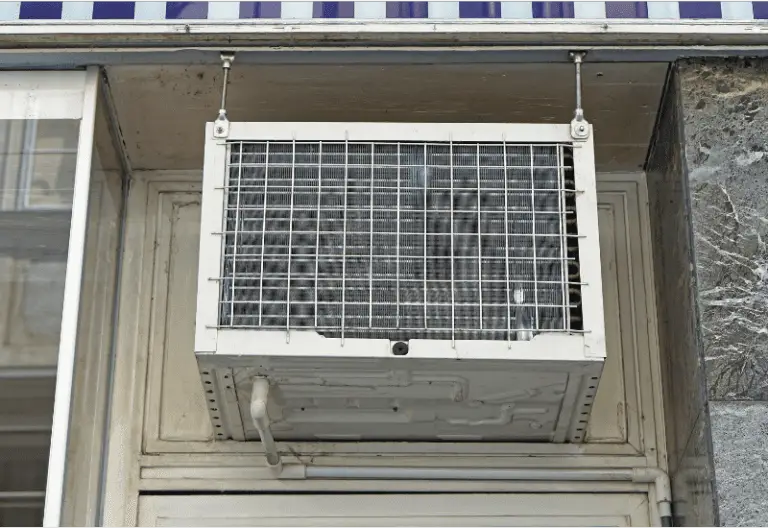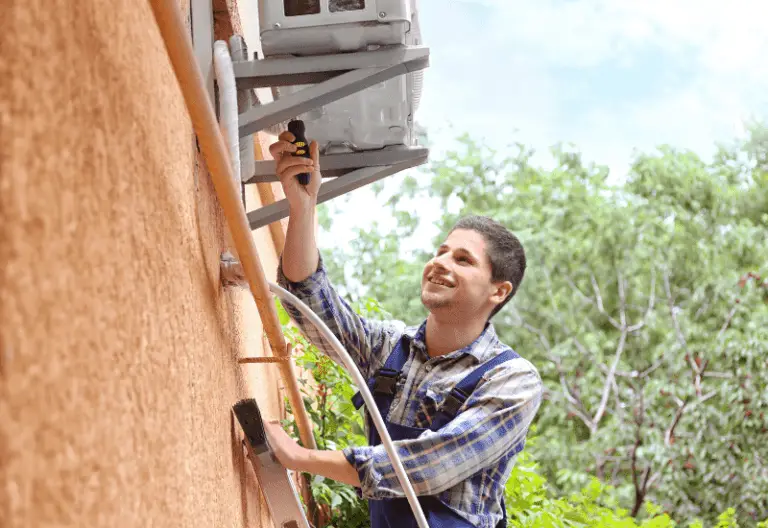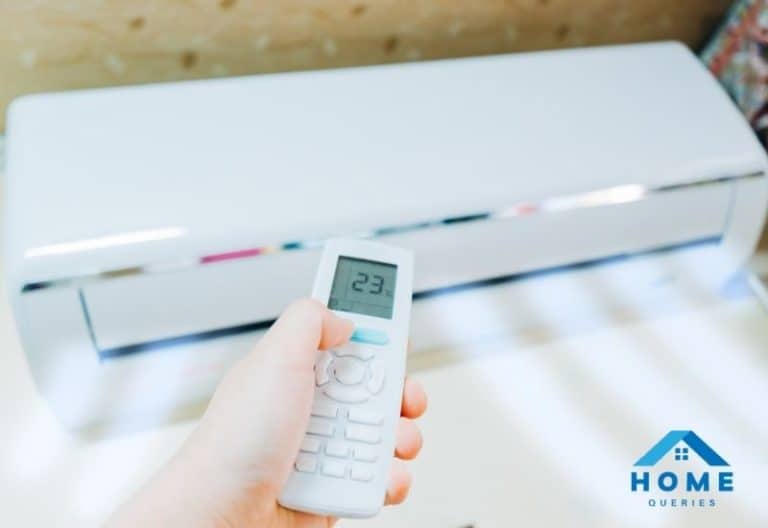Freon is a non-combustible gas used as a refrigerant in air conditioning appliances. The freon evaporates over and over, which then helps produce cool air.
The chlorofluorocarbon compounds of methane and ethane are called freons. Freon is used in every air conditioning system. It is essential when it comes to air conditioning systems.
“Can I Add Freon To My Central Air-Conditioner?” It is a question that we get almost every day. So, today in this article, we will discuss if you can add freon to your Central air conditioner. Hopefully, by reading this article, all of your queries regarding freon and central air conditioning systems will be answered.
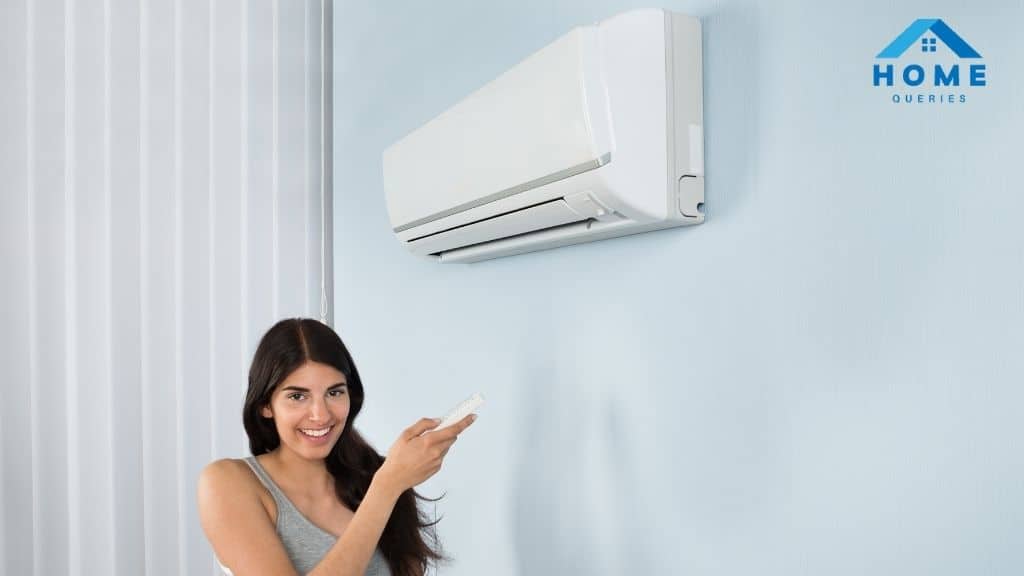
Can I Add Freon To My Central Air Conditioner?
You can add Freon to your air conditioner unit yourself; however, to do this, you will need to require knowledge about air conditioners and a few specific tools to do it with precision.
Even though you can do it yourself, it is still considered an extremely dangerous and difficult process, so hiring a professional is a better idea than doing it yourself.
How To Put Freon Gas In Your Air Conditioning Unit?
Adding freon gas to your air conditioning system is an extremely dangerous and difficult process. You will need a few specific tools and vast knowledge about air conditioning systems to do this task.
Here’s how you can put freon gas in your air conditioning unit:
Part – 1 :
1) First, you have to diagnose if your air conditioning system is low on freon gas.
2) You have to check if air conditioner vents are blowing warm or room temperature air. This is a common sign that your air conditioning unit needs a refrigerant refill. However, a broken thermostat may cause the same problem as well.
If the issue is because of the refrigerant; the air temperature will steadily grow warmer over time because your unit is slowly losing refrigerant. Refrigerant is the kind of gas that absorbs the heat from a specific space and ejects the hot air out in the environment outside the space.
If a broken thermostat or other issue is the cause of the warm air, the temperature of the air will fluctuate between hot and cold.
3) Search for ice on the coils of your air conditioner. By taking a peek through the front window of the Air conditioning unit, you can inspect the pipes inside.
If the pipes and coils look like they are covered in ice, you’re experiencing a leak and slowly losing refrigerant, which is known as freon gas. The leak needs to be repaired by a qualified technician, or you will face the same problems continuously.
Adding refrigerant without fixing the leak does further damage your Air conditioning unit.
4) Watch out for water accumulation on the floor near your furnace. Inspect the area around your furnace for any signs of water. If there is water pooling around it, this indicates condensation.
Your coils were most likely covered in ice, and now the ice has melted around the furnace area. The water can damage your furnace. So hiring a qualified HVAC technician to inspect the issue is the best way to go in a situation like this.
5) Hiring a qualified HVAC technician to repair any leaks is the wise thing to do. Air conditioning units are sealed tightly to make sure the Freon never leaks. If you need to refill refrigerant (also known as freon gas), you probably have a leak that needs to be fixed as soon as possible.
You will continue to experience the same issues until an experienced HVAC technician fixes the leak. Adding more refrigerants is a quick fix.
However, this will damage your air conditioning unit further.
Read more: How Long Do Goodman Air Conditioners Last? [Answered]
Part – 2:
1) You have to perform a routine maintenance check before adding freon gas into your air conditioning system. Different parts of your air conditioning system need to be cleaned before you can charge it with additional freon.
Parts that need to be cleaned before adding freon are Air filter, blower wheel, evaporator coil, and condenser coil. Adding more refrigerant to a unit with dirty parts can damage the Air conditioner even more than you can anticipate.
2) Choosing the right refrigerant for your air conditioning unit is crucial. Putting the wrong refrigerant in your unit can cause combustion, injury, and property damage. By reading your Air conditioner manufacturer’s operating guide, you can determine which refrigerant your air conditioning unit needs.
If you can’t find the operating guide, check the electrical control box or the air conditioning unit’s cabinet for information regarding refrigerants. The two most common refrigerants used in air conditioners are R-22 and R410A. R-22 is mostly used in older units and is slowly being phased out because it harms the ozone layer around our earth.
If your Air conditioner is leaking R-22, you must get the problem fixed as soon as possible. The reason behind this is, R-22 is in the process of being discontinued so, the price for it has skyrocketed and will only continue to get higher.
3) Before working with any freon, you should read the packaging for more information. Protecting your eyes, skin, and lungs when working with refrigerants is a must. Wear safety goggles and thick gloves when you are working with Freon.
Directly inhaling any refrigerant can lead to sudden death. Some refrigerants are extremely hazardous and require heavy respiratory protection. If you get Freon on your skin, rinsing the area with water and seeking medical treatment immediately is a must if you wish to avoid health problems. R-717 and R-764 refrigerants are extremely irritating to the eyes and lungs, along with R-717 being flammable. R-17 needs to be Handled with a ton of caution.
The liquid form of Freon will automatically look for the coldest area of an enclosed Air Conditioning unit between the furnace coil and the outside condensing unit. You have to Make sure that the outside temperature is above 55°F (12.7°C) before proceeding with your task.
When outdoor temperatures are under 55°F, the coldest area of your air conditioning system will be the outside unit of the air conditioner, which will make the freon behave improperly.
Part-3:
1) Consider hiring a professional to perform the freon adding procedure. It is highly recommended that a qualified professional technician refills and recharges your Air conditioning unit. The procedure of refilling your air conditioner with freon is tremendously dangerous, and if done incorrectly, you can damage your air conditioning unit. Homeowners get permits to add refrigerants in the U.S.A.
However, the Environmental Protection Agency (EPA) requires that anyone you hire to refill your air conditioner with refrigerant needs to have a professional certification. You have to Proceed with a ton of caution if you decide to do this yourself. Improper handling of refrigerant can lead to life-threatening injuries, death, explosions, and property damage.
2) Before refilling your air conditioner with refrigerant, you have to turn off your Air conditioning unit at the thermostat and breaker. You have to Go to the thermostat that operates your air conditioner.
Turn it to the “off” position. Your air conditioner unit will either have a fused disconnect or circuit breaker attached to it. If your air conditioner unit has fuses, you have to disconnect them. If your unit has a circuit breaker, you have to turn the breaker off.
After taking these steps, Hook up the refrigerant gauges to the valve connections. There will be three-valve connections attached to your unit’s hardware, with valves on each side (left and right). Attach the gauge with the blue hose to the low-pressure valve on the left side. Afterwards, Attach the gauge with the red hose to the high-pressure valve on the right side.
Then you can leave the center valve open for a while. That is where you’ll connect the yellow hose to feed the refrigerant into the system.
3) Now, you can turn the Air conditioning unit back on. You have to wait for about 15 minutes. After turning the Air conditioner back on, the unit will need to run for several minutes to stabilize itself. You won’t get an accurate reading on the refrigerant gauges until your Air conditioner has stabilized itself.
4) There will be a small knob on the bottom of the refrigerant canister, which you have to Twist several times to open. You have to Open the canister of freon gas by twisting the spout on the bottom.
Afterwards, you need to Attach the yellow hose to the refrigerant canister’s valve then attach the other end to the middle valve connection on your gauge. The middle valve is the one between the blue and red valve connections. Then Open the blue low-pressure valve on the left side. Keep it Open for a few seconds, then close it.
Open it for a few more seconds, then close it again. Continue doing this for a while. You want to slowly let small amounts of the refrigerant into the unit at a time until you reach your target subcooling temperature.
5) You must monitor the gauge until you reach the target subcooling temperature. The target subcooling temperature is written on the outdoor unit’s rating plate. Use the gauge to monitor the temperature to know when you have to shut down the valve.
Turn off the valve and then disconnect the gauge set. Once the target subcooling temperature is reached, turn the valve off. Twist the knob on the refrigerant canister to stop the refrigerant from flowing Inside the hose. Disconnect all the hoses and the gauge set from the Air conditioner unit. Since the air conditioning unit is running during this process, you don’t have to restart your unit after adding refrigerant.
6) Lastly, you have to perform an electronic leak test to ensure safe operation. You can buy an electronic leak detector at home improvement stores, and you can get them online as well.
Each detector is different from one another, but you generally need to run the tool along the refrigeration components to scan for a leak. If you don’t feel comfortable doing this yourself, hire a certified HVAC technician to come out and test the unit for you.
Things You Will Need To Put Freon Gas In Your Central Air-Conditioner
To refill or fill your Central Air-Conditioner with freon gas/refrigerant, you need a few tools. So, here’s a list of tools you will need to put freon gas in your Central Air-Conditioner:
- R-22 or R410A refrigerant
- Refrigerant gauge set
- Blue, red, and yellow hoses
- Electronic leak detector
These appliances are essential when putting freon gas in your Central Air-Conditioner.
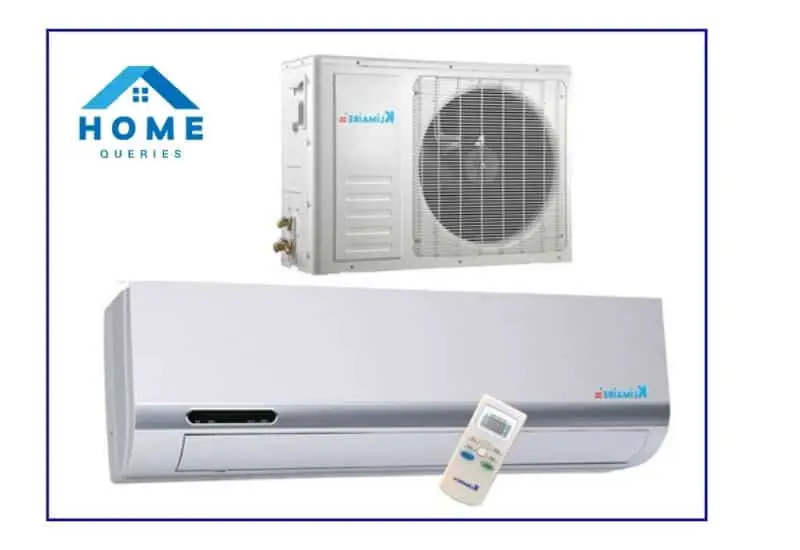
Can Air Conditioners Run With Low Freon?
Air Conditioners run on a gas called. The cooling process of air conditioners happens because of this gas.
Air Conditioners can run on low freon, but it is hazardous. By running on low freon, the air conditioner takes a long time to cool the room and control the humidity in the air. It’s also higher in cost and extremely dangerous for health.
Running on low freon can cause permanent damage to air conditioners, so it’s best to fix these issues immediately.
Types Of Freon Gas
Freon is widely used around the world. Freon is a manufactured greenhouse gas used in refrigerators and air conditioners. There are different types of Freon gas.
- Zoetrope
- 2,2-Dichloro-1,1,1-trifluoroethane
- 1,2-Dichlorotetrafluoroethane
- 1,1-Difluoroethane
- R404A
- Chlorofluorocarbons
- Hydrofluorocarbon
- R-407C
- Dichlorodifluoromethane
- Difluoromethane
- R-410A
- 1,1,1,2-Tetrafluoroethane
- Chlorodifluoromethane
How Is Freon Used In Air Conditioners?
Almost everyone knows that freon is a refrigerant. We know it helps cool a room. However, the cooling process is more complex than most of us think.
There’s a compressor in the air conditioners. It compresses the freon with the help of a lubricant. Then the freon gas moves through a few coils, which helps lower the heat and convert it to liquid. Liquid freon is cold.
The liquid freon flows through a type of expansion valve, which cools it even more—turning it into a gas. The cold gas then goes through a few more coils, allowing it to absorb the heat and lower the room’s temperature.
This is how freon helps with cooling the temperature of a room.
Read more: Do i Need To Drain My Toshiba Portable air conditioner?
Can Inhaling Freon Cause Health Problems?
Inhaling Freon has a massive impact on your health. Unlike most gasses, it doesn’t just get used up. It stays forever in your body’s cells, which is risky and can cause long-term health problems.
Freon poisoning is a severe health condition. It can cause:
1. Headaches
2. Nausea
3. Skin problems
4. Eye problems
5. Brain damage: Prolonged exposure to freon can cause severe brain damage
How Freon Affects The Environment
The earth has struggled with greenhouse gas problems and melting earth caps in the last couple of years. One of the main reasons behind this issue is CFC. Freon is a manufactured greenhouse gas that indicates how deadly it is for the earth and its environment. CFC works by depleting the ozone layer, and it’s also a freon gas.
With everyone using air conditioners and refrigerators, the use of CFC is increasing rapidly, which is leading the earth into catastrophe.
Why You Shouldn’t Use Freon?
Freon is terrible for the environment because it is CFC. CFC stands for chlorofluorocarbon.CFC harms the earth’s ozone layer and is responsible for holes in the ozone layer. It traps heat in the lower atmosphere, which causes the weather to become warmer. CFC is a full greenhouse house. It harms the ozone layer tremendously. It is responsible for the ozone layer hole in the Antarctic.
Conclusion
The main question was adding freon to your Central air conditioner. The answer is affirmative. You can add freon gas to your air conditioner, but it is extremely risky as exposure to freon can cause a ton of health issues as well. This is why hiring a professional technician is the best option when it comes to adding freon to your Central air.
However, if you don’t have the luxury to hire someone and would rather do it yourself, then the best option for you is to do a ton of research on Central Air-Conditioners and freons. Luckily this article has got you covered. The more you know about air conditioners and freon, the easier it will be for you to add freon to your Central Air-Conditioner.
However, even if it becomes easy, the risk still lurks overhead. Freon needs to be Handled with a ton of caution. Even the smallest mistake while handling freon can cause a big irreversible mistake. So, you have to be incredibly cautious and smart while handling a refrigerant as harmful as freon


